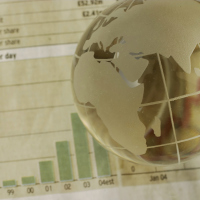Price falls in Sydney and Melbourne have again driven CoreLogic’s Home Value Index into the red with a 0.6 per cent decline reported for national housing values in June.
Sydney suffered the largest fall of 1.6 per cent during the month followed by a 1.1 per cent drop for Melbourne. Hobart (-0.2 per cent) and regional Victoria (-0.1 per cent) also fell into decline.
According to CoreLogic, all capital cities and regional areas are now well past their peak rate of growth.
“Housing value growth has been easing since moving through a peak in March last year, when early drivers of the slowdown included rising fixed-term mortgage rates, an expiry of fiscal support, a trend towards lower consumer sentiment, affordability challenges and tighter credit conditions,” commented CoreLogic research director, Asia-Pacific, Tim Lawless.
“More recently, surging inflation and a rapidly rising cash rate have added further momentum to the downwards trend. Since the initial cash rate hike on 5 May, most housing markets around the country have seen a sharper reduction in the rate of growth.”
Adelaide was the only capital city to record a growth rate above 1.0 per cent in June at 1.3 per cent, as growth in Brisbane (0.1 per cent) and Perth (0.4 per cent) continued to ease.
Elsewhere, growth of 0.3 per cent was reported for Canberra and 0.9 per cent for Darwin, with an overall monthly decline of 0.8 per cent for the combined capital cities.
“Considering inflation is likely to remain stubbornly high for some time, and interest rates are expected to rise substantially in response, it’s likely the rate of decline in housing values will continue to gather steam and become more widespread,” Mr Lawless warned.
The combined regional areas of the country eked out a gain of 0.1 per cent, led by regional South Australia which recorded by far the strongest monthly growth of 1.8 per cent.
Slightly higher housing values were seen in the regional areas of Queensland (0.2 per cent), Western Australia (0.2 per cent) and Tasmania (0.1 per cent), while values remained flat in regional NSW and dipped by 0.1 per cent in regional Victoria.
CoreLogic said that the housing market outlook was becoming increasingly skewed to the downside and noted that the trajectory housing values take moving forward would be heavily dependent on the path of interest rates.
The “double whammy” of high inflation and rising mortgage rates, Mr Lawless suggested, will likely weigh on the household sector, flowing through to housing demand.
“Non-discretionary inflation is rising at more than double the pace of discretionary inflation, which means households are likely to be saving less as they spend more on essentials such as food, fuel and shelter,” he said.
“Lower savings and higher expenses along with rising interest rates will have an ongoing impact on borrowing capacity for households. Reduced borrowing capacity is likely to further diminish housing demand and potentially deflect more home buyers towards the middle to lower end of the pricing spectrum.”







